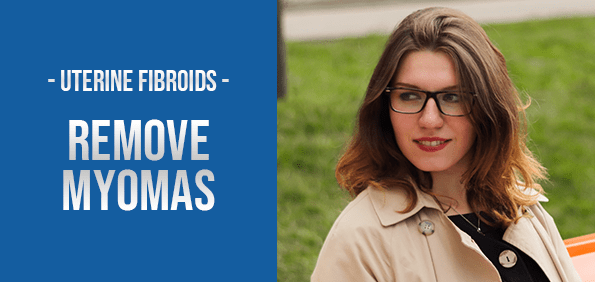The most reliable doctors in Mexico
Uterine fibroids information and locations in Mexico
Uterine fibroids, also known as uterine myomas, are non-cancerous tumors that develop in the muscular tissue of the uterus. They are quite common in women of reproductive age and can vary in size and quantity.
Although the exact cause of myoma growth is not known for certain, it is believed to be related to hormonal imbalances, as myomas tend to grow during reproductive age and reduce in size after menopause. They may also be influenced by genetic and hereditary factors. The treatment for myomas depends on the size, location, and quantity of myomas a person has, as well as their age and reproductive plans. Some treatment options include observation, medication, radiofrequency or surgery.
Surgery to remove uterine fibroids is called myomectomy and is performed to remove fibroids and preserve the uterus, depending on the type and location of fibroids you may be eligible for hysteroscopic procedure, open surgery, laparoscopic or robotic surgery.
Surgery to remove uterine fibroids is called myomectomy and is performed to remove fibroids and preserve the uterus, depending on the type and location of fibroids you may be eligible for hysteroscopic procedure, open surgery, laparoscopic or robotic surgery.
There are different types of myomas
Subserosal myomas
Found in the outermost layer of the uterus and may grow outward, causing swelling in the abdomen.
Intramural myomas
Found within the muscular tissue of the uterus and may vary in size and quantity.
Submucosal myomas
Found in the innermost layer of the uterus and may grow inward, causing heavy menstrual bleeding and pain.
Pedunculated myomas
Subserosal myomas that grow on a thin stalk attached to the uterus.
Find the best general surgeons for uterine fibroids in Mexico!
Benefits
Alleviates the symptoms
Prevents other conditions
Can be minimally invasive
Prevents other conditions
Can be minimally invasive
Surgery
Procedure:
2 hrs.
Hospital stay: 2 - 3 hrs.
Cleared to fly: 2 - 3 days
Hospital stay: 2 - 3 hrs.
Cleared to fly: 2 - 3 days
After surgery
Out of town patients’ follow-ups are scheduled face-to-face with any specialist following the procedure. Patients are clear for flying after 2 - 3 days from the uterine fibroids.
Note: See with the specialist what follow-up or postoperative care you need to take with a primary care physician, or specialist in your home city, regarding sutures or medication adjustments after the procedure.
As an Amazon Associate, we earn from qualifying purchases.
Take a look at one of our medical tourism essentials for gynecology surgery.
Take a look at one of our medical tourism essentials for gynecology surgery.
Before and after images
View additional images for this procedure.

View more


Locations
Select the city of your choice to seethe doctors profile.
Cancún, Q. Roo.
Dra. Ana L. Arias
View more

Uterine fibroids frequent questions
Get answers to our most frequently asked questions and what to expect after the surgery.
What are the symptoms of myomas?
Symptoms of myomas may include heavy menstrual periods, pain during sexual intercourse, pelvic pain, increased abdominal size, and frequent urination.
Can myomas cause infertility?
Myomas can affect fertility if they interfere with the implantation of the fertilized egg in the uterus or block the fallopian tubes. However, most women with myomas can become pregnant and have a healthy pregnancy.
Can myomas turn into cancer?
Myomas are benign tumors and rarely turn into cancer. It is important for women with myomas to undergo regular exams to ensure that myomas are not growing or changing unexpectedly.
Recent news
Article
Treat uterine fibroids with non-surgical USg HIFU technology in Mexico
Doctores Especialistas on August 01, 2024

Disclaimer: This information does not reflect the medical advice from our clinics. All cases are different and this treatment may not suit you. Always refer to a medical professional with the certification and experience. All of our physicians are fully qualified to perform these procedures. For more information and diagnosis contact one of our top specialized clinics.
In all medical procedures, there are chances of complications, the specialist will provide you detailed information about the risks of the procedure, talk to the specialist directly.
In all medical procedures, there are chances of complications, the specialist will provide you detailed information about the risks of the procedure, talk to the specialist directly.





